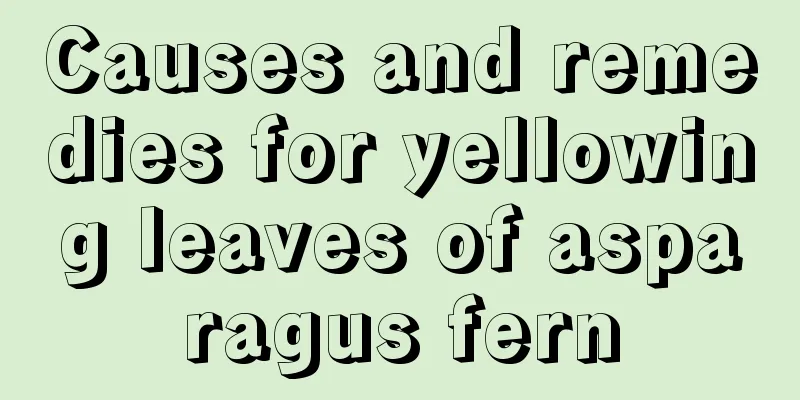Pests of Dianthus and their control methods

Pests of Deutzia: Red-margined mothsymptomThe red-margined tiger moth occurs more frequently in the eastern region of my country and south of Liaoning. The adult moth hides during the day and comes out at night. It has a strong phototaxis and weak flying ability. The larvae gather in groups and cause damage after hatching, and disperse after the third instar. The larvae are relatively agile. The larvae are polyphagous, mainly feeding on the stems, flowers and fruits of the Deutzia plant. In severe cases, the flowers and leaves of the entire plant are bitten clean, leaving only the leaf veins and pedicels. Prevention and treatment methodsDuring the larval stage, you can spray with 500 times diluted Bt emulsion or 8000 times diluted 20% diflubenzuron. After the larvae spread, they can be killed manually when they are large enough, and captured 2-3 times in a row. When the adults are in the pupation stage, they can be killed with black light. Pests of Deutzia odorata: White mothsymptomThe gypsy moth is a new pest discovered in coastal areas in recent years. It has a varied diet, a large reproduction rate, strong adaptability, and a wide range of transmission routes. When the situation is serious, the entire plant of Deutzia can be eaten up by the insects, causing the death of some branches or even the entire plant. Prevention and treatment methodsSpray 8000 times diluted chlorpyrifos No. 1 on eggs and larvae before 4th instar or adopt biological control methods such as releasing Zhou's rodent wasp for prevention and control. Black light can be used to lure and kill adults. Pests of Deutzia: Big BagwormsymptomIn Henan, Jiangsu, Zhejiang, Anhui, Jiangxi, Hubei and other places, one generation occurs a year, in Nanjing and Nanchang, two generations occur very rarely, and in Guangzhou, two generations occur. The mature larvae overwinter in sacs hanging on the branches. In Zhengzhou, the larvae resume activities in mid-to-late April of the following year, but do not feed. The larvae are the most harmful to Deutzia odorata. They feed during the day and night and are most aggressive at night. In serious cases, you can hear the rustling sound of the larvae eating away at the leaves. Prevention and treatment methodsDuring the peak period of early larvae, 800 times diluted 50% carbofuran emulsifiable concentrate can be sprayed and the adult insects can be lured and killed with black light. Because Deutzia odorata is allergic to DDT and Omethoate, avoid using these two pesticides when insect pests occur to prevent pesticide damage. |
<<: Common Pests of Hypericum and Their Control Methods
>>: Common Pests of Coreopsis Large-flowered and Their Control Methods
Recommend
Common diseases of rubber trees and their prevention and treatment methods
Rubber tree anthracnose Symptoms Anthracnose main...
What is the meaning of hydrangea and what is the legend?
1. Meaning Hydrangea has a very beautiful appeara...
High-yield planting technology of pepper
Chili is a common seasoning vegetable in life and...
The green ivy is climbing all over the wall, the longevity is overflowing in the pot, and the spider plant is like a waterfall. I am impressed.
Kalanchoe (Photo by: Dream Butterfly 536 Source: ...
How to grow pennywort in soil until it overflows the pot?
The pennywort is one of the most common small aqu...
How did he grow a dying flower from a bare stem to a full-blown flower?
Clivia reason If Clivia is frozen or has root rot...
Can figs be planted outside your home?
Can figs be planted outside your home? The fig tr...
The main value of leopard arrowroot
Landscaping The leaves of the leopard arrowroot a...
What to do if the leaves of hydroponic copper coin grass turn yellow
1. Water Unclean water is a big reason, because o...
Can red maple leaves be grown indoors?
Can red maple leaves be grown indoors? Red maple ...
Cucumber planting conditions and regional requirements for the growing environment
Cucumber Growing Conditions Cucumbers prefer a wa...
Which month is best to plant peonies?
Peony is a very popular flower . It has thick and...
Gardenia and spider plants have rotten roots. Learn how to prune them.
Gardenia root rot 1. Clean the root system Remove...
How and when to plant onions
Onion planting time and month When to plant onion...
Cultivation methods and precautions of autumn dendrobium
Autumn Dendrobium is a variety of orchid. It is a...









